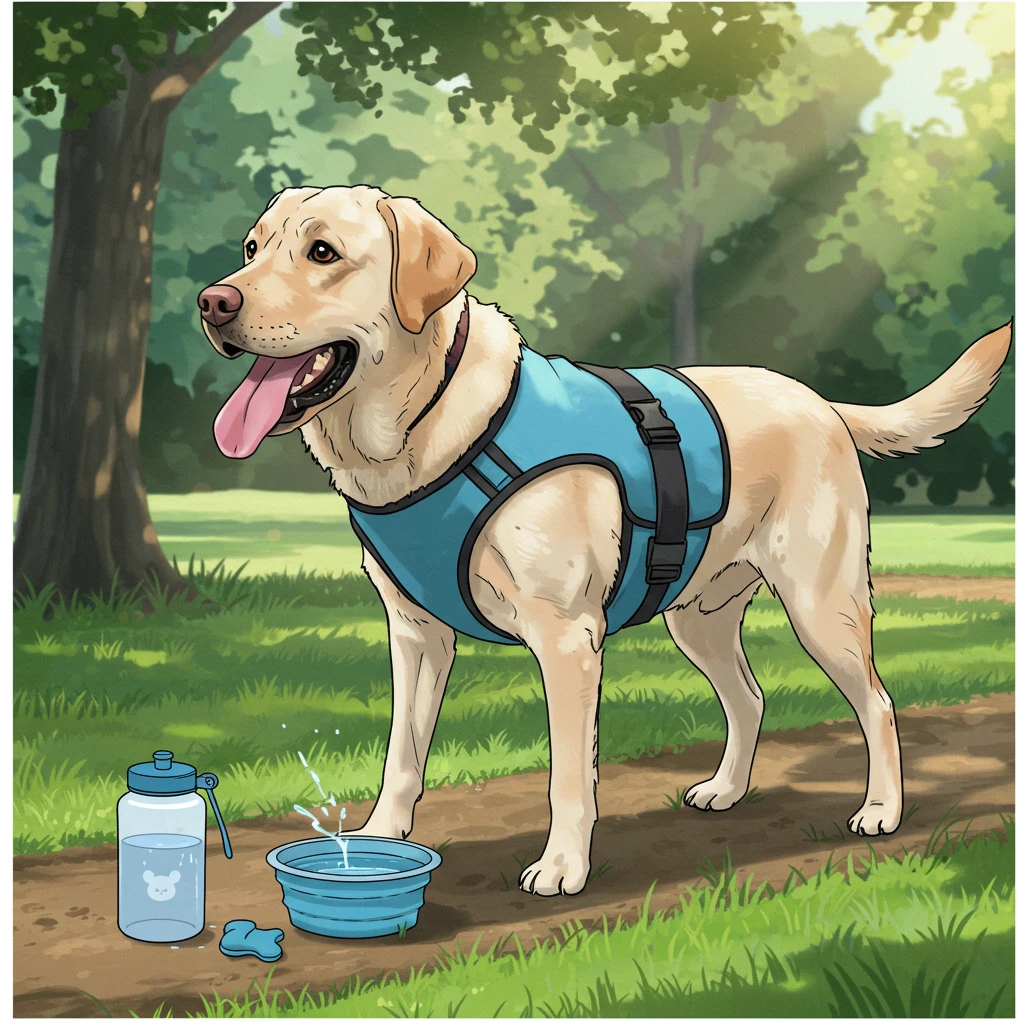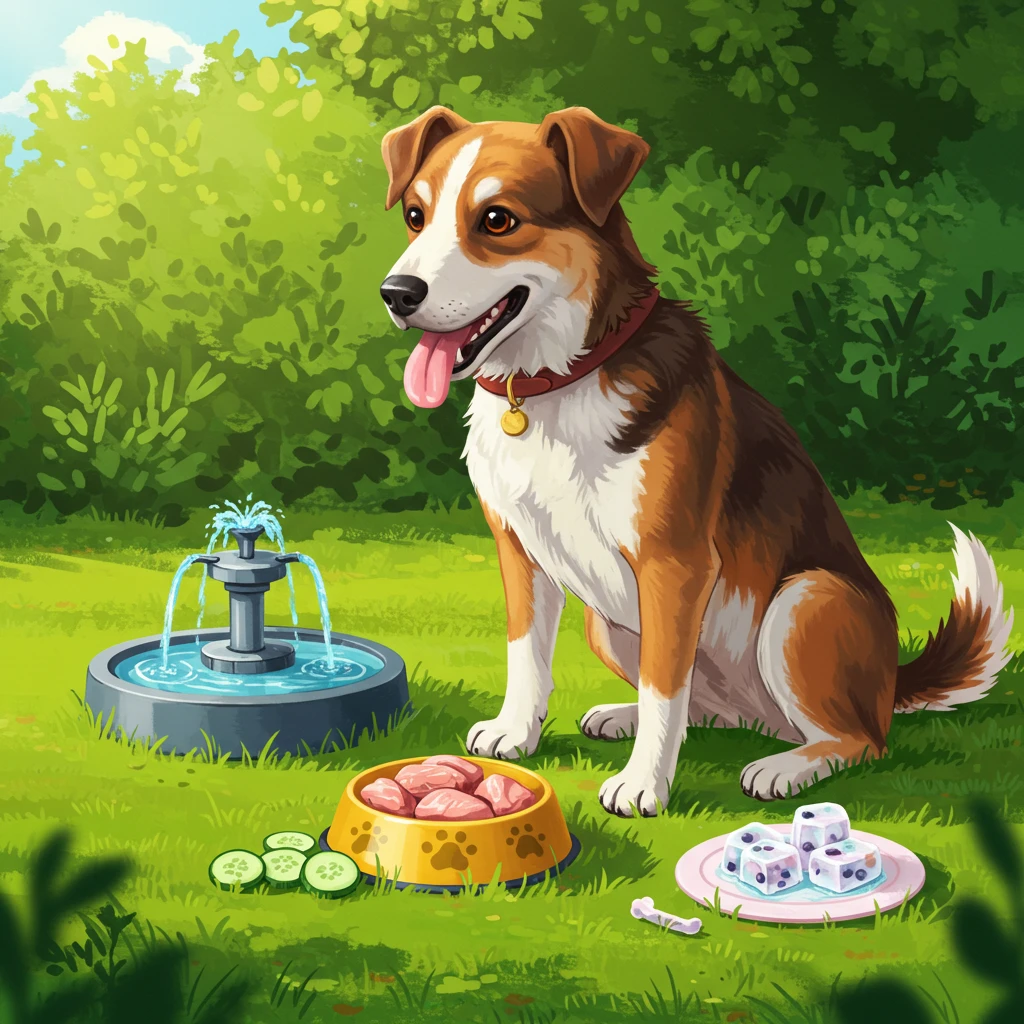Exercising your dog is essential for their physical and mental well-being, but during warmer months or in hot climates, ensuring your furry friend doesn’t overheat is crucial. Overheating can lead to heat exhaustion or even heatstroke, which can be life-threatening. This article will guide you through safe exercise practices for your dog, focusing on exercise_and_safety to prevent overheating.
Understanding the Risks of Overheating
Dogs don’t sweat like humans do. Instead, they rely on panting and limited sweat glands in their paws to dissipate heat. This makes them more susceptible to overheating, especially during exercise. Recognizing the signs of overheating, such as excessive panting, drooling, lethargy, and vomiting, is critical to prevent serious health issues.
Choosing the Right Time and Place
Early Mornings and Evenings
The best times to exercise your dog are early mornings and late evenings when temperatures are cooler. Avoid midday heat, which is the peak time for high temperatures.
Shady and Grassy Areas
Select walking routes or play areas with plenty of shade and grass. Grass remains cooler than asphalt or concrete, which can burn your dog’s paws and increase body temperature.
Hydration: The Key to Safety
Always Have Water Available
Ensure your dog has access to fresh water before, during, and after exercise. Portable dog water bottles or collapsible bowls are excellent for keeping your dog hydrated on the go.
Encourage Rest and Hydration Breaks
During exercise, take regular breaks to allow your dog to cool down and drink water. Short, frequent breaks are more effective than longer, less frequent ones.
Tailoring Exercise to Your Dog’s Needs
Consider Age and Breed
Puppies, senior dogs, and breeds with short snouts (brachycephalic breeds) like Bulldogs and Pugs are at higher risk of overheating. Adjust exercise intensity and duration based on your dog’s specific needs.
Low-Impact Exercises
Opt for low-impact activities such as walking, swimming, or playing in a shaded yard. Swimming is particularly effective as it cools the body while providing a full-body workout.
Use Cases and Examples
Example 1: Morning Walks for a Labrador
For a Labrador Retriever, known for their energy and playful nature, a 30-minute walk at 7 AM followed by a play session with a frisbee in a shaded park can provide ample exercise without overheating risks.
Example 2: Indoor Play for a Bulldog
Bulldogs, with their brachycephalic structure, benefit from indoor play sessions during hot weather. Use toys like puzzle feeders or engage in short training sessions to keep them active without the heat exposure.
Key Points and Best Practices
- Monitor the temperature and humidity levels before deciding on outdoor activities.
- Use a dog-friendly sunscreen on areas with little fur, like the nose and ears.
- Invest in cooling vests or mats for additional protection during hotter days.
- Pay attention to your dog’s behavior and stop exercise immediately if they show signs of overheating.
- Consult with your veterinarian for personalized exercise recommendations based on your dog’s health and breed.
FAQ
1. How do I know if my dog is overheating?
Signs of overheating in dogs include excessive panting, drooling, weakness, vomiting, diarrhea, and collapse. If you notice these symptoms, move your dog to a cooler place, offer water, and consult a vet immediately.
2. Can I walk my dog on hot pavement?
Avoid walking your dog on hot pavement as it can burn their paws and increase the risk of overheating. Test the surface with your hand; if it’s too hot for you, it’s too hot for your dog.
3. Are there specific breeds more prone to overheating?
Yes, brachycephalic breeds (e.g., Bulldogs, Pugs), overweight dogs, and those with thick coats are more susceptible to overheating. Exercise these dogs with extra caution.
4. How much water should my dog drink during exercise?
Ensure your dog drinks small amounts frequently rather than a large quantity at once. As a rule, provide opportunities to drink every 15-20 minutes during exercise.
5. What are some indoor exercise options for hot days?
Indoor exercises include playing fetch in a hallway, using interactive toys, teaching new tricks, or setting up an obstacle course with household items.
Conclusion
Exercising your dog without overheating requires careful planning and awareness of your pet’s limits. By choosing the right time and place, ensuring proper hydration, and tailoring activities to your dog’s needs, you can keep your furry companion safe and healthy. Always be vigilant for signs of overheating and consult with your veterinarian for tailored advice. Remember, a happy, healthy dog is an active one, but safety should always be the priority.
For more detailed guidelines on keeping pets safe in hot weather, you can visit the American Veterinary Medical Association’s pet safety page.







